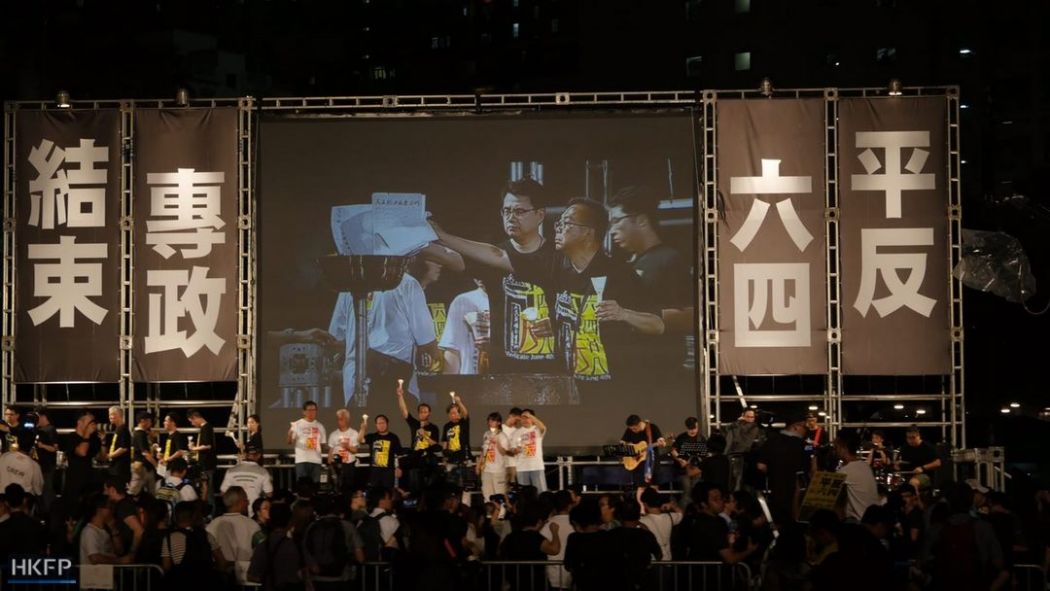Nearly 30 years after the brutal, bloody fact, it was always predictable that the rest of the world would move on and largely forget the hundreds, if not thousands, of people who died in and around Tiananmen Square on June 3 and 4, 1989.
After all, since those dark days in Chinese history–currently not included, by the way, in the revised history curriculum for Hong Kong secondary students—many new crises have broken out and much additional mayhem has been perpetrated around the globe. It’s hard to stay focused on a single historical tragedy when so many others rise up to take its place.
What’s hard to fathom, however, is how and why so many Hongkongers have also developed Tiananmen amnesia lately.

This is the proud city that witnessed a massive demonstration against the decision by China’s then-paramount leader, Deng Xiaoping, to launch a military assault on peaceful pro-democracy protesters, many of them young students, who had occupied the square for nearly two months following the death of their hero, Hu Yaobang, the purged former general secretary of the Communist Party who became a symbol of political and economic reforms opposed by hardliners in Deng’s government.
Hu’s death inspired thousands of students across the country to leave their universities and march through the streets of Beijing and into the square, singing patriotic songs and demanding greater democracy.
In the weeks that followed, additional tens of thousands would join the protesting students. By May 13, with some 300,000 people now gathered in the square, a student-led hunger strike would win wide-spread public support as well as a meeting between student leaders and then-premier Li Peng.
But soon thereafter, of course, came martial law and a night of horror and bloodshed on June 3 that spilled into the morning hours of June 4.
The youthful dream of a democratic China had ended in a People’s Liberation Army massacre of innocents five years after the signing of the Sino-British Joint Declaration promising the return of Hong Kong to Chinese sovereignty and eight years prior to the agreed-upon handover date of July 1, 1997.
Hongkongers, deeply shaken by the Chinese government’s ruthless assault on its own people, were quick to express their outrage. In a city which then had a population of only 5.6 million, one million protesters poured into the streets to demonstrate their support for the students and their disgust for a regime that had rolled over their lives and dreams with PLA tanks.

And every June 4 since then has been marked by a solemn, candlelight memorial vigil for the Tiananmen dead in Victoria Park during which speeches are made urging the Chinese leadership to reverse the official verdict on the Tiananmen protesters as a traitorous group of counterrevolutionaries who deserved their grisly fate.
Through times of searing heat and torrential rain, the vigil has stubbornly persisted and, after 1997, Hong Kong became the only city in China where people enjoyed the freedom to challenge the central government in this way. On the mainland, June 4 is just another day of historical dishonesty; here its ghastly history of injustice is perennially resurrected.
Understandably, depending on the weather and the events and mood of any particular year, turnout for the vigil has been up and down since the first 150,000 people lifted up their memorial candles on June 4, 1990. Indeed, after a turnout of 80,000 in 1992, numbers dropped dramatically for several years as Beijing’s hands-off approach toward Hong Kong inspired confidence in the “one country, two systems” agreement that was supposed to guarantee the city’s personal freedoms and autonomy.
Attendance spiked again at 70,000 for the 10th anniversary of the crackdown and at 82,000 on the 15th anniversary but otherwise, those two years aside, averaged around 47,500 between 1999 and 2008. This relatively low figure was no doubt welcomed by the Chinese leadership at the time as a sign that Hong Kong was gradually entering the fold.
Then came the record turnout of 200,000 to mark the 20th anniversary and, as Beijing’s heavy hand reached more frequently and forcefully into Hong Kong affairs in the ensuing years, no turnout since then has been below 110,000, according to the vigil’s organiser, the Hong Kong Alliance for the Support of Patriotic Democratic Movements in China.
Lately, however, in the wake of the 2014 pro-democracy Occupy protests—which sputtered out after producing no concrete results—and during the rise of a radical localist movement that shuns everything associated with the mainland, the alliance has come under attack for sponsoring an empty ritual that no longer holds relevance for the 7.4 million people who live in Hong Kong today.

Nothing could be further from the truth. As the rest of world rushes to embrace China as a 21st-century economic superpower with an ambitious international agenda and an open wallet, it becomes even more important for Hong Kong, still the only free Chinese city, to stage this annual reminder of a brutality that is now papered over by an ever-mounting wad of cash.
These days an aggressively hands-on central government, spooked by Occupy and recent calls for self-determination and independence, is actively moving to bring recalcitrant Hong Kong to heel, and the city’s vaunted freedoms are under threat.
Over the past several years, we have seen Hong Kong booksellers abducted by mainland security agents and duly elected lawmakers ousted from the Legislative Council while other popular would-be candidates were banned from running for office altogether.
Mainland laws—and perhaps mainland-style interrogations and detentions—will soon apply in the West Kowloon terminus of the high-speed express rail system that we were, at great expense, steamrolled into joining, and the city’s leaders now go silent when Hong Kong reporters are beaten up on the mainland.
Amid all these alarming developments, candles still shine through the night on June 4 in Victoria Park; the vigil goes on, rightly honouring those who died in Tiananmen 29 years ago, denouncing a government that refuses to acknowledge its murderous mistake and underscoring Hong Kong’s unique identity as a special administrative region of China.
Despite all the recent setbacks, that identity remains strong and robust. And let’s hope the same can be said of the vigil in the years ahead until and unless the central government reverses its Tiananmen verdict.
Barring such a reversal, the June 4 night that Victoria Park goes dark will also be the night that the fire in Hong Kong’s soul is snuffed out.
